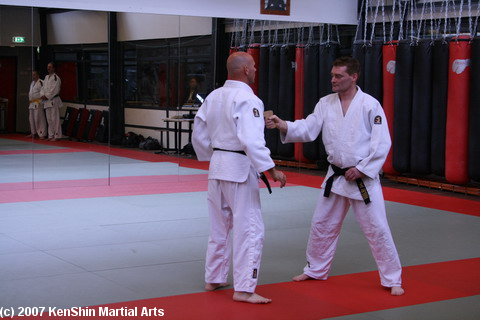
Men like Yokoyama, Isogai and Tanabe would have been a wealth of technical knowledge however, in the year of his departure from the Kodokan, Oda and Yachibei were just kids who hadn’t yet started their martial training (the first specialist high school/Kosen judo competition was in 1914). In Maeda’s time at the Kodokan there were no shortage of ne waza experts to train with. In November 1904 he left Japan forever, accompanying Tsunejiro Tomita to the United States kicking off a decade of globe-trotting, fighting and competing before he eventually landed on Brazilian shores. Mitsuyo Maeda, who would later teach jiu-jitsu to Carlos Gracie, trained at the Kodokan from 1895 until 1904. One of the most famous of those experts was Join Oda and it was in this environment where the triangle choke was developed. He did however recognize the merits of ground fighting and therefore allowed for ne waza “experts” and special rule events like those of the specialist high schools (where the Kosen judokas practiced and competed) to develop those skill sets. Kano did not like the trend he saw towards more ne waza, which he felt was less aesthetically pleasing than the stand-up game and believed it went against his ideal of judo as a physical education versus pure fighting art. Most significantly for ground grappling were the rule changes adopted by the Kodokan in 1925, which severely limited the way one could engage in ne waza as well as the amount of time allowed on the ground.

Kodokan competition rules had gradually changed many times over the years, every rule change eliminating some aspect of the jujutsu’s effective, but dangerous repertoire. A young Join Oda, one of the creators of the sankaku jime. Kosen judo practitioners like Oda believed that the standup and ground techniques should be practiced 50/50, versus 80% standup and 20% ground espoused by judo’s founder Jigoro Kano.


Kosen Judo is not a separate style, but a set of different competition rules that allowed more groundwork (Ne waza) than standard Kodokan rules. He, along with men like Hajime Isogai were instrumental in the development of what is now known as Kosen Judo. Oda joined the Kodokan in 1910 and was awarded his first dan one year later in 1911. Oda is of particular note and there is a fairly well known video filmed in the 1950’s and available on YouTube of him performing techniques, many of which look much like “modern” Brazilian jiu-jitsu techniques, including a number of versions of the triangle choke from various positions. There are two judo masters accredited with the development of the triangle choke Join Oda (often referred to as Tsunetane Oda) and Kanemitsu Yachibei Hyoe. The triangle choke was developed in the earlier days of the Kodokan, sometime in the mid-1910s to early 1920s. Some techniques however, have comparatively “modern” origins in jiu-jitsu’s long history and one of these is the triangle choke, or sankaku-jime as it is known in Japanese. There exist four hundred year old books and scrolls with illustrations depicting men in old style kimonos and sometimes armor performing throws, armlocks and chokes on each other similarly to those which we apply to our own training partners on a weekly basis. Many of the jiu-jitsu (jujutsu) techniques we commonly see in the dojos, training centers and fighting rings of the world have been little changed for centuries from the battlefield days of the samurai in feudal Japan.

Ortega | Valente Brothers Black Belt Triangle being utilized in an old judo contest circa 1930’s


 0 kommentar(er)
0 kommentar(er)
